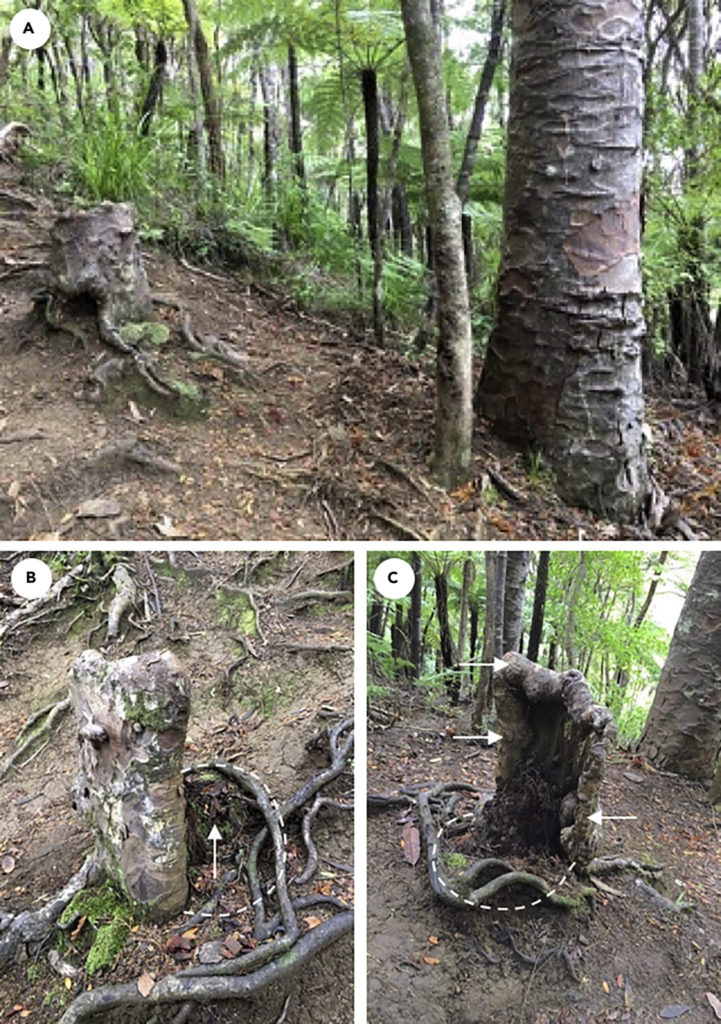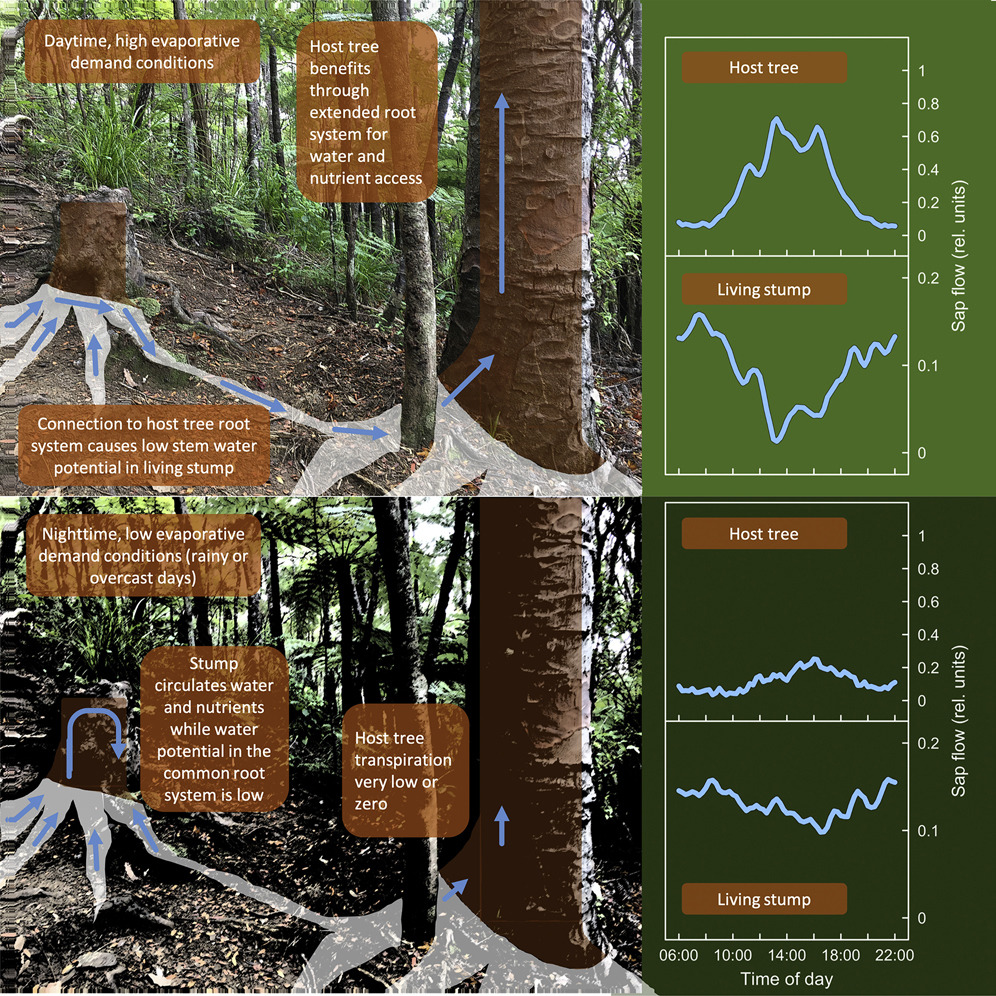Let’s get this out of the way….Plants and their ecosystems are amazing. To survive in so many environments with abundant or minimal resources without capabilities to migrate, plants are one of the most amazing organisms on the planet. Though research is abundant in above ground plant systems, below ground ecology is starting to show the vital importance that mycorrhizae, root grafts, and microbial action play in the health of individual plant and the surrounding ecosystems.
- Figure 1. Living, Leafless Stump of the Southern Conifer Agathis autralis (Kauri). Frontal view of the tree trunk remnant from the forest track (A). Oblique lateral view showing the typical gray-brown kauri bark with distinctive hammer mark pattern and decaying wood behind it (arrow) indicating the original trunk perimeter (dashed line) (B). Rear view showing a thick callus lining along the edge (arrows). The dashed line indicates the approximate original trunk perimeter (C). Source: Bader and Leuzinger, Hydraulic Coupling of a Leafless Kauri Tree Remnant to Conspecific Hosts, iScience(2019), https://doi.org/10.1016/j.isci.2019.05.009
A new research study found that a ‘dead’ stump, with no way for photosynthesis (i.e. leaves), was actually found to have a live and functioning vascular system (xylem and phloem). Yes, you read that correctly, but how in the world is this possible? The study found that sap flow is directly related to the surrounding tree, which indicates that mycorrhizae and/or natural root grafting via the underground ecosystem flows through the stump into the tree. The most probable benefit of this strange relationship is the root grafts/mycorrhizae is connected throughout the forests. This can help during drought to allow the surrounding trees to better survive drought conditions. Figure 2 shows the benefits for the tree and the stump.
- Figure 2. During daytime when host trees transpire vigorously, the host tree profits from a larger root system and the stem water potential (Ψ) is low (H). During nighttime and periods of low evaporative demand, the living stump circulates water through its living tissues at Ψ close to zero. In the absence of transpiration, this water movement is likely driven by root pressure or osmolyte accumulation (I). Source: Bader and Leuzinger, Hydraulic Coupling of a Leafless Kauri Tree Remnant to Conspecific Hosts, iScience(2019), https://doi.org/10.1016/j.isci.2019.05.009
The sensor data found that during the day, when the live tree is photosynthesizing (thus needing more water), the water pressure is low in the trunk while high in the tree. During the night, when little water is required by the tree, sap flows back into the trunk. The interconnected nature of underground systems is evident in this study (Fig. 3).
- Figure 3. Sap flow between the host tree and the living trunk during various times within a 24 hour period. This symbiotic relationship is shown via arrows demonstrating the flow direction of the water.
Though there are limitations to this study as primarily there is only one stump and tree, so no replications can be developed, this information reinforces the need for more soil ecology understanding. With more replicated research, we can start to develop best management practices in improving soil ecology in ornamental plantings.
The Purdue Department of Horticulture and Landscape Architecture is fortunate to have one of the world’s leading microbial ecology leaders in our department. Dr. Lori Hoagland is developing data that is demonstrating the importance of considering soil ecology that we haven’t even considered in the past. You can find Dr. Lori Hoagland’s Soil Microbial Ecology Lab at this site: https://www.purdue.edu/hla/sites/hoaglandlab/
This is just a brief synopsis to this study. To read more about this publication (which is highly suggested), click this link:
https://www.sciencedirect.com/science/article/pii/S2589004219301464?via%3Dihub
Source: Source: Bader and Leuzinger, Hydraulic Coupling of a Leafless Kauri Tree Remnant to Conspecific Hosts, iScience(2019), https://doi.org/10.1016/j.isci.2019.05.009


